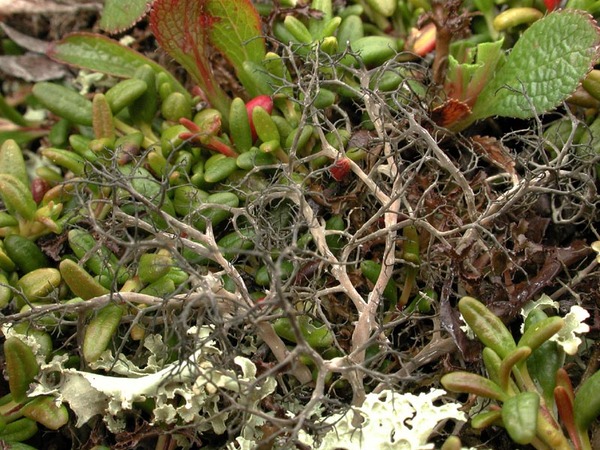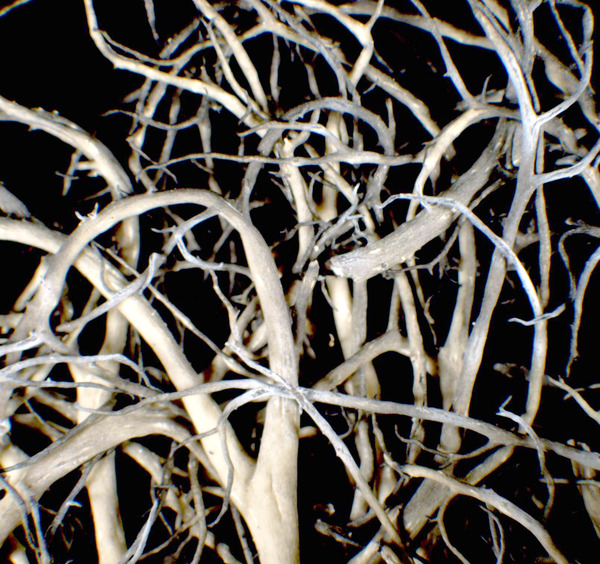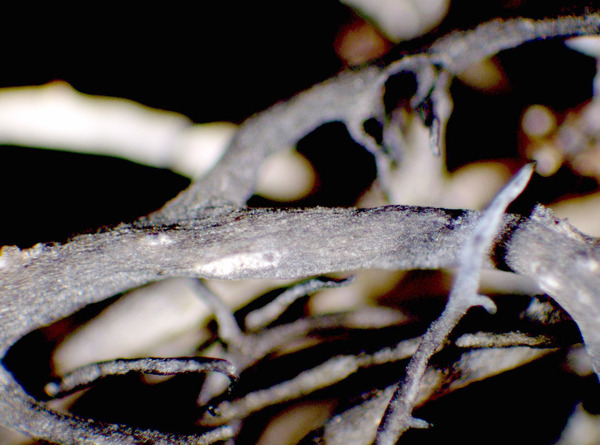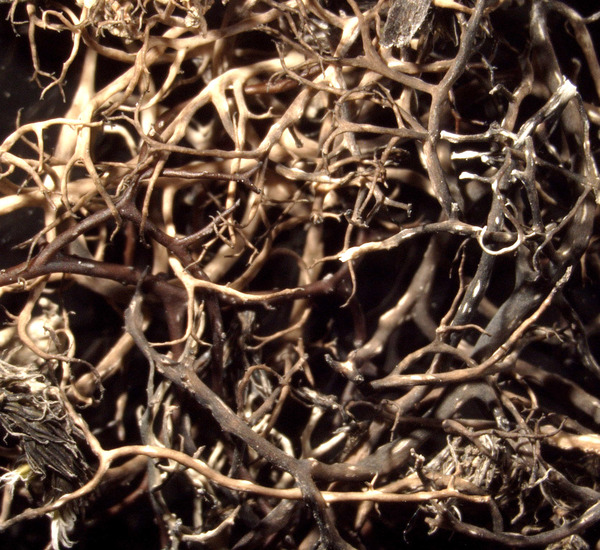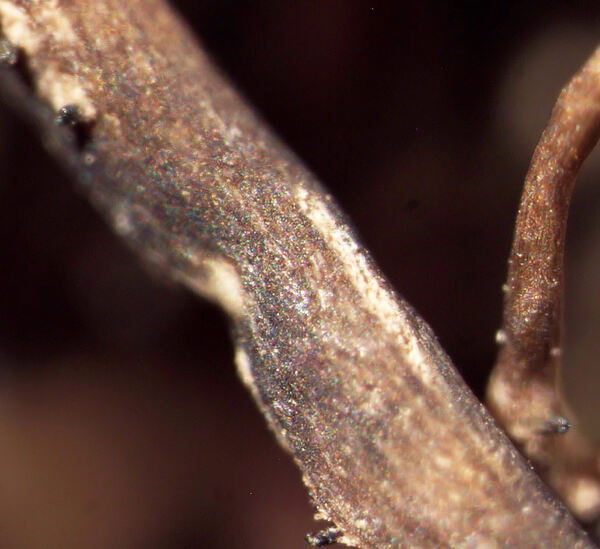Alectoria nigricans (Ach.) Nyl.
Lich. Scand.: 71, 1861. Basionym: Cornicularia ochroleuca var. nigricans Ach. - Lichenogr. Univ.: 615, 1810.
Synonyms: Alectoria thulensis (Th. Fr.) Nyl.; Gowardia nigricans (Ach.) Halonen, Myllys, Velmala & Hyvärinen
Description: Thallus fruticose, filamentous, ascending to decumbent, rigid, pinkish grey to pale grey brown at the base, dark grey-brown to black at apices, dull, forming large, loosely attached entangled mats, the branches 0.5-1(-1.5) mm thick, anisotomic-dichotomously divided, to 8(-10) cm long, subterete, becoming flattened at the base. Pseudocyphellae abundant, slightly raised, fusiform to linear, to 1.2 mm long. Cortex of periclinally arranged hyphae; medulla white, rather compact. Apothecia extremely rare (never found in Italian material), zeorine, to 2 mm across, with a brown disc. Epithecium brown; hymenium and hypothecium colourless. Asci 2(-4)-spored, clavate, the K/I+ blue tholus penetrated by a faintly amyloid apical cushion with parallel or diverging flanks, the wall K/I-, surrounded by a K/I+ blue outer layer, Lecanora-type. Ascospores, 1-celled, broadly ellipsoid, first hyaline, later reddish brown, 20-40 x 12-25 μm. Photobiont chlorococcoid. Spot tests: medulla K+ faintly yellow to reddish, C+ red, KC+ red, P+ yellowish. Chemistry: alectorialic acid and usually barbatolic acid.
Growth form: Fruticose filamentous
Photobiont: green algae other than Trentepohlia
Reproductive strategy: mainly asexual, by thallus fragmentation
Commonnes-rarity: (info)
Alpine belt: rather rare
Subalpine belt: extremely rare
Montane belt: absent
Dry submediterranean belt: absent
Humid submediterranean belt: absent
Padanian area: absent
pH of the substrata:
1 2 3 4 5
Solar irradiation:
1 2 3 4 5
Aridity:
1 2 3 4 5
Eutrophication:
1 2 3 4 5
Poleotolerance:
0 1 2 3
Altitudinal distribution:
1 2 3 4 5 6
Rarity
absent
extremely rare
very rare
rare
rather rare
rather common
common
very common
extremely common
Loading data...
Occurrence data
Predictive map
Growth form: Fruticose filamentous
Photobiont: green algae other than Trentepohlia
Reproductive strategy: mainly asexual, by thallus fragmentation
Commonnes-rarity: (info)
Alpine belt: rather rare
Subalpine belt: extremely rare
Montane belt: absent
Dry submediterranean belt: absent
Humid submediterranean belt: absent
Padanian area: absent
pH of the substrata:
| 1 | 2 | 3 | 4 | 5 |
Solar irradiation:
| 1 | 2 | 3 | 4 | 5 |
Aridity:
| 1 | 2 | 3 | 4 | 5 |
Eutrophication:
| 1 | 2 | 3 | 4 | 5 |
Poleotolerance:
| 0 | 1 | 2 | 3 |
Altitudinal distribution:
| 1 | 2 | 3 | 4 | 5 | 6 |
Rarity
absent
extremely rare
very rare
rare
rather rare
rather common
common
very common
extremely common
Loading data...
Occurrence data
Predictive map


